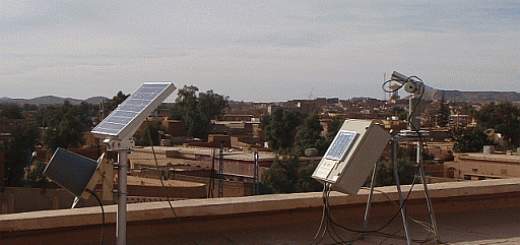New Study about Aerosol Radiative Forcing and Efficiency using AERONET Data.
The paper entitled “Shortwave radiative forcing and efficiency of key aerosol types using AERONET data”, by García et al., has been recently published in the journal “Atmospheric Chemistry and Physics Discussions”.
According to the last report of Intergovernmental Panel on Climate Change (2007), the effects of atmospheric aerosols on the Earth-atmosphere system still have high uncertainties. Improving our knowledge about the direct radiative effects of atmospheric aerosols is a necessary step in order to address their indirect and semi-direct effects and, thus, the transformation of solar energy stored by aerosols in the atmosphere and its consequences. In this context, this study describes the approach currently employed by the global network AERONET, one of the most useful tools today to this aim. The direct radiative forcing and the radiative forcing efficiency of key aerosol types is discussed with a homogeneous methodology, which allows a direct intercomparison among them and the establishment of benchmarks, for example, to feed into climate models and climate studies.
The aerosol types considered have shown the greatest influence on the radiative balance, according to their rates of emission to the atmosphere and radiative properties: desert mineral dust introduced into the atmosphere by erosive processes; biomass burning produced by tropical farming activities and forest fires; urban-industrial and continental background particles; oceanic aerosols and those that are found in free troposphere conditions. The geographical distribution of the AERONET stations used, which were grouped into 14 regions considering the predominant aerosol and the proximity to source areas, is displayed in the figure 1.
For more details about this study please refer to http://www.atmos-chem-phys-discuss.net/11/32647/2011/acpd-11-32647-2011.html

Figure 1. Geographical distribution of the AERONET stations used, which were grouped into 14 regions.







